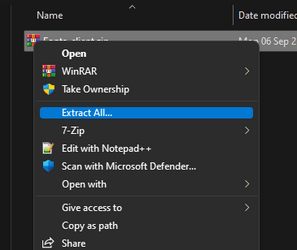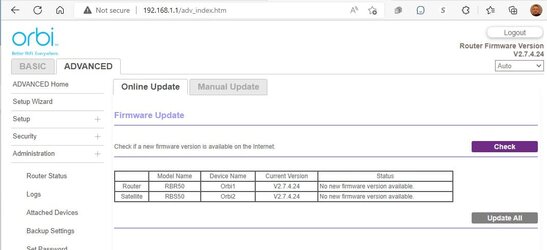I just replaced my Asus router with a new Netgear Nighthawk AX5400 (model RAX50) router. This thread is not really about my specific router, but just thought I'd put that out there.
So I just installed the new router on my home network today and got all wireless devices working as well. But here's the situation. I noticed that firmware updates are available. Despite this being a new router, the last firmware update on this device appears to be from August 2021. I understand I have to do them myself manually (one by one until I reach the most current level of firmware updates).
But accessing the updates from my router's home page, I get no where. In other words, I get a zip file that Windows 11 cannot recognize or do anything with. All I get are prompts - asking silly questions like how I want to open the file (i.e. Word, Adobe, etc. I thought Windows 11 had zip file extractions built into the Windows 11 operating system?
Can someone advise? For example, is there any third party software that I need in order to extract the firmware files that Netgear states are available for my new router? If this is not necessary, how do I get around the endless cycle of Windows 11 asking me how I wish to open these firmware updates?
Any feedback here is appreciated. I realize I have to be SUPER careful with firmware updates in order to avoid destroying the new router. And Netgear tech support indicated that each firmware update (with the past year) will need to be installed (one by one) before the router will become smart enough to grab future updates on its own.
So I just installed the new router on my home network today and got all wireless devices working as well. But here's the situation. I noticed that firmware updates are available. Despite this being a new router, the last firmware update on this device appears to be from August 2021. I understand I have to do them myself manually (one by one until I reach the most current level of firmware updates).
But accessing the updates from my router's home page, I get no where. In other words, I get a zip file that Windows 11 cannot recognize or do anything with. All I get are prompts - asking silly questions like how I want to open the file (i.e. Word, Adobe, etc. I thought Windows 11 had zip file extractions built into the Windows 11 operating system?
Can someone advise? For example, is there any third party software that I need in order to extract the firmware files that Netgear states are available for my new router? If this is not necessary, how do I get around the endless cycle of Windows 11 asking me how I wish to open these firmware updates?
Any feedback here is appreciated. I realize I have to be SUPER careful with firmware updates in order to avoid destroying the new router. And Netgear tech support indicated that each firmware update (with the past year) will need to be installed (one by one) before the router will become smart enough to grab future updates on its own.
My Computer
System One
-
- OS
- Windows 11 Pro
- Computer type
- PC/Desktop
- CPU
- Intel Core i7-9700 @ 3.00GHz
- Motherboard
- Gigabyte Technology Z390 Gaming X-CF
- Memory
- 16 GB
- Graphics Card(s)
- Nvidia GeForce GTX 1660
- Sound Card
- Realtek High Definition Audio
- Monitor(s) Displays
- ASUS
- Hard Drives
- Samsung SSD 980 Pro 1TB
WDC SSD 500GB
- Antivirus
- Norton 360









